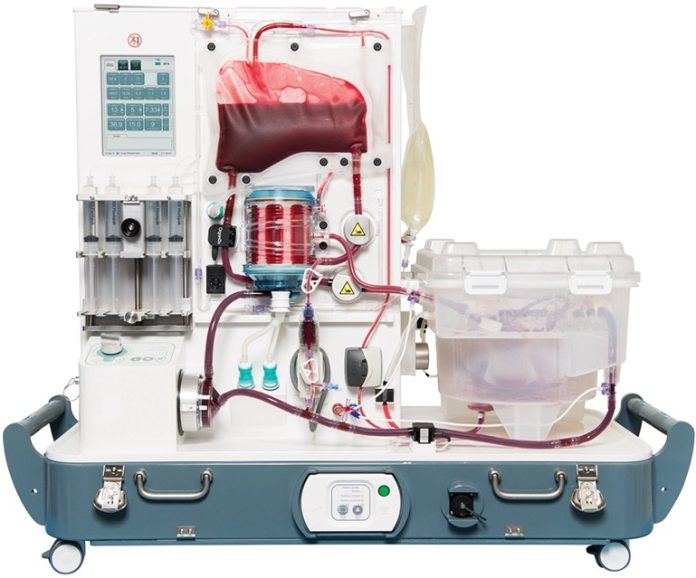A liver transplant can be lifesaving; however, if the transplanted liver fails to function properly, the transplant becomes a costly exercise in futility. A new study by UCLA researchers has found that a portable finger-probe device can accurately measure liver function in potential organ donors. The study results could result in the saving of thousands of dollars spent on surgical evaluation teams. The findings appear in the early online edition of the Journal of Surgical Research.
The study authors note that the device successfully measured liver function in brain dead adult organ donors and that, in addition to saving thousands of dollars per transplant, it could change the way organs are assessed for transplant suitability. For the study, the UCLA researchers partnered with OneLegacy, a non-profit organ and tissue recovery organization that serves the greater Los Angeles area. In a blind study of the device, they measured liver function in 53 potential organ donors. Eleven livers were rejected because of poor quality and the other 42 were transplanted and their function was subsequently tested to compare to the results obtained by the device.
First author Dr. Ali Zarrinpar, an assistant UCLA professor of surgery in the Division of Liver and Pancreas Transplantation, explained, “This device is best single predictor of organ survival in our patients. Ultimately, what it does is gives us a quantitative measure of how good a liver is without having to visually inspect the organ. It gives us a measurement to talk about when we’re thinking about whether to transplant an organ into a recipient.” He added that accurate and reliable function tests for other donor organs are available; however, this is not the case for livers.
At present, the transplant procedure involves a thorough assessment of a potential donor’s medical history, multiple blood tests, and any hospital treatments. If acceptable, a surgical team from the recipient’s medical center is dispatched to the donor’s location to inspect and potentially acquire the organ. Dr. Zarrinpar noted that mobilization of the team costs thousands of dollars per procedure, and approximately 10-15% of the time the organ is deemed unusable. Moreover, an organ from a patient with a questionable history or borderline laboratory results may be considered a waste of the surgical team’s time and the retrieval effort abandoned. However, the probe could readily used to test organ function in these marginal donors. As a result, the number of organs available for transplant could be increased.
Dr. Zarrinpar explained, “Although the number of transplant candidates continues to grow, organ availability has plateaued, resulting in more patients dying while on transplant waiting lists. This device, which can be used in any hospital, could help increase the number of donor livers and help save very sick patients waiting for transplant.” He added that the device functions much like a pulse oximeter, which attaches to the finger to measure oxygen in the blood. In this case, the probe measures the rate at which a dye, injected into the potential donor’s bloodstream, is cleared by the liver. This innovative, non-invasive, and rapid test successfully predicted which livers would function properly in transplant patients.
A liver transplant may include the whole liver, a reduced liver, or a liver segment. The majority of transplants involve the whole organ; however, in recent years, transplants using segments of the liver have been performed with increasing frequency. This would permit two liver recipients to be transplanted from one donor or allow a living donor liver donation.
According to the American Liver Foundation, each year, more than 1,500 individuals die waiting for a donated liver to become available. At present, approximately 17,000 adults and children have been medically approved for liver transplants and are waiting for donated livers to become available.
The study authors wrote: “These data warrant further exploration in a larger trial in a variety of settings to evaluate acceptable values for donated livers. At a time of increasing regional sharing and calls for national organ sharing, this method would assist in the standardization of graft evaluation. It could also lead to increasing liver graft utilization while decreasing travel risk and expenses.”








